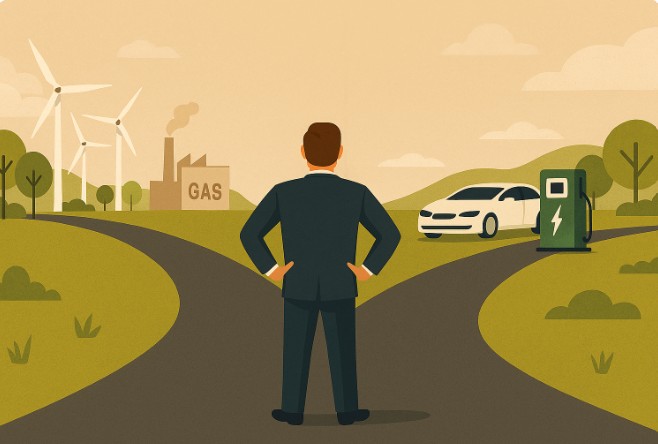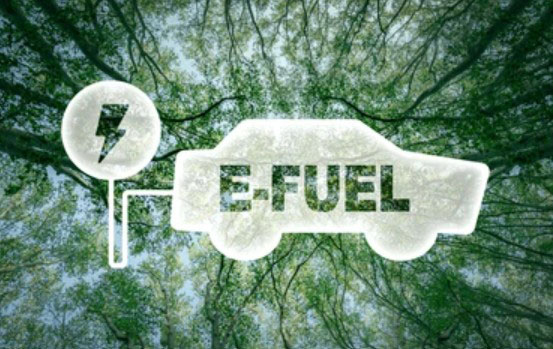February 08, 2021
The U.S. school bus fleet is more than just a reliable way to transport the nations children to and from school each day. It’s the nation’s largest public transportation fleet at two and a half times the number of vehicles of all other forms of mass transportation combined. Gifted $100 million over five years, the World Resources Institute (WRI) will use a portion of this to work with a broad set of stakeholders to spur the electrification of over 450,000 school buses. Erika Myers, global senior manager with WRI, joined us and shared more details on this effort, as well as how it will affect the electric vehicle charging infrastructure nationwide.
Transcript
John Eichberger: Hey everybody, welcome to Carpool Chats. I’m John Eichberger with the Transportation Energy Institute. Today, we’re joined by Erika Myers with the World Resources Institute, and we’re going to be talking about a whole bunch of stuff mostly focused on electrification. Erika, thank you very much for joining us. How are you doing?
Erika Myers: It’s great to be here. Thanks so much, John.
John Eichberger: You just started with the World Resource Institute recently, correct?
Erika Myers: Yeah, about three months ago.
John Eichberger: Can you tell us a little bit about what the organization is all about?
Erika Myers: Sure. The organization has been around for a long time leading the way on environmental related issues, sustainable development, and carbon emission reduction. Our organization helps world leaders think through what it’s going to take to impact and reduce the effects of climate change.
John Eichberger: Okay. That’s a pretty big mission, isn’t it?
Erika Myers: It is. We have over a thousand staff all over the world.
John Eichberger: Thousand staff. We have four at the Transportation Energy Institute. Just to put a little perspective, right? One of the things I learned that you’re working on, you guys are working on a school bus electrification type program, right?
Erika Myers: That’s correct. Yeah, just recently we found out that we were the lucky recipients of one of the first traunches of funding from the Bezos Earth Fund, which is a fund that’s been entirely donated by Jeff Bezos, who you may know from Amazon. And so-
John Eichberger: I’m somewhat familiar with his work. I think I got a couple of his boxes upstairs.
Erika Myers: I think a lot of us have Amazon boxes these days. He is helping to fund a lot of climate change initiatives with organizations around the world, and he started out with a lot of funding for very large non-government organizations based here in the US. And so, we are doing two major projects. One is a carbon monitoring satellite project, and then the other is helping to support the deployment of 480,000 electric school buses in the United States.
John Eichberger: 480,000?
Erika Myers: Yes.
John Eichberger: Wow. That’s a lot of kids.
Erika Myers: It is.
John Eichberger: Tell us a little bit more about that project. So, when you think about it, we see school buses all the time. Well, not right now with the pandemic, but typically we see school buses all the time. And you never want to be behind one, because they’re not necessarily the cleanest operators out there. You get the nice black cloud of smoke trailing behind the kids when you’re going down the road. So, tell us a little bit more about that.
Erika Myers: Yeah, so the idea would be that we would have lots of benefits directly for helping support kids who ride in the school buses. I don’t know if you know this but this is the number one form of transportation in our country by volume. So, more than all the airplane trips in a day, more than all the mass transit use in a day in the United States. So, we have 480,000 of these school buses deployed on any given school day. And so, this is resulting in a lot of local air quality impacts. It’s impacting the kids who are on the buses, who aren’t getting the adequate ventilation. There’s a lot of studies that showed that the air pollution impact is compounded based on the shape of the bus and how that exhaust is circulating within the cabin. And so, this is an issue that we know of and we can do something about now with the advent of electrification.
John Eichberger: But doesn’t that deprive the kids? I mean when I was younger and I’d get on a bus to go on a field trip, one of the things I always looked forward to, I always remember, was that smell, that lovely pungent aroma of not only the children sitting next to me, but the recirculation of that exhaust. I mean are we depriving the kids of that experience?
Erika Myers: I really don’t want to say that we’re depriving any children, but I definitely think that based on some feedback I’ve read in articles that the kids love it and so do the drivers. It’s a quieter ride, it’s easier to handle the buses. And for kids, they feel like they’re in a vehicle of the future. This is progress and that they’re part of it. And for many of these kids, it would be the very first time that they’re riding an electric vehicle. And this will give them exposure, a whole new generation of drivers’ exposure to the technology.
John Eichberger: So, this really goes what I’ve been saying for a long time that I think by the end of the 2020s entering 2030, the customers buying a vehicle is going to be very different than the customer today. Right now, if I’m thinking about buying electric vehicle, I might be thinking, “Why would I want to plug in my car?” These kids are going to be exposed to it. That’s going to be the mindset, “I plug everything in. Why would I not plug in my vehicle?” So, it really is a demonstration project to get these kids ready for the next generation, huh?
Erika Myers: Yeah, it is. Yeah.
John Eichberger: Tell me a little bit about the power requirements for buses, because you think about the battery systems in light duty vehicles, and there’s been a lot of discussion can we scale them up to power the bigger vehicles? Obviously a bus is a big vehicle, but the route structure is a little different than you might think of our commercial vehicles. So, what kind of power are we looking at? What type of recharging infrastructure is going to be required to support these?
Erika Myers: Yeah, a lot of our research shows that these buses don’t actually travel that long distance. And so, their routes are very definable and predictable in terms of what charging capacity that they would need to use in the bus yards where the charging infrastructure would be located. And right now we see a lot of bus manufacturers offering larger sized batteries. And in a lot of ways, they see this as an opportunity for vehicle-to-grid. So, you may not need such a large battery for purposes of your daily commute, but you may need it for exporting power and doing things like vehicle-to-building to help this resilience. A lot of schools are, for example, emergency shelters. And so, you could theoretically have some buses who pull up to the schools and provide power directly to gymnasiums, lighting, refrigeration, other things that are necessary. And alternatively helping to support the grid and getting an additional revenue stream associated with that. So, we see the bus battery sizes are closer to 120KW, which is probably more than is necessary given the current average routes, but that could change.
John Eichberger: I hadn’t even thought about the vehicle-to-grid benefits of these buses. You’re right, they’re not driven that many hours in a day. You can recharge them overnight when the rates are low, demand is low. And then, reintroduce them to the grid to help offset some of those peak demand cycles. Is that something that’s already been done or is it just conceptual at this point?
Erika Myers: There’s quite a few pilot projects that are exploring this opportunity of the export capacity. Dominion Virginia, for example, has just released the first 50 buses within their pilot project. And all of those buses will be VTG enabled, and all of the charging infrastructure is VTG capable. So, they are going to be testing that capability set and then defining the value to Dominion for those services. As you may know, in Virginia, they have 100% renewable energy target. And so, Dominion does know that they’ll need a lot of storage capacity to enable that future, which will be highly intermittent.
Erika Myers: And so, this is a potential opportunity to leverage the battery that exists in these buses. So, it’ll be a lot of storage capacity if we replace every single bus. I did a back-of-the-envelope estimate about 62 terawatts, which is huge for 480,000 vehicles across the country. Now, not all of those obviously will probably be VTG enabled. I think a lot is going to depend on the local market conditions, but we know a lot of the school bus manufacturers are going this route. Lion Electric, Thomas Built, Blue Bird, all of them have VTG capable electric school bus offerings at this point.
John Eichberger: So, you said a couple of terawatts is that less than 1.37 gigawatts, whatever it was that Doc Brown needed to get Marty back to the. When you start talking that size is completely beyond my realm of comprehension, that’s a lot of power.
Erika Myers: It’s a lot of power. Probably much more power than we would actually need based on the forecast for a renewable energy future.
John Eichberger: So, as we start playing with this and I say playing with it because this is serious and I joke around a bit because I like to laugh and find as much humor as I possibly can in the world around us, but as we start playing with this and start demonstrating the ability of returning the power back to the grid when we need it, does that give us a little bit more credibility as you start looking at distributed energy storage with light duty vehicles and passenger vehicles? I know that’s been a long-term. If we did do that that’d be pretty awesome. I think there’s a lot of hesitancy among consumers to say, “Hey, that’s my power. I’m not going to share it with you. What’s wrong with you?” We’re not a very sharing society, but do you think this could help us break through some of that our reluctance maybe to embrace that type of a possibility?
Erika Myers: I think that this project could really help to define what these VTG capabilities could be valued at for the grid. We don’t really have a good way of valuing that at this point other than looking at interconnection policies with solar or wind. Trying to find an appropriate value for the battery itself is something that’s… It’s not just facing the vehicle-to-grid market, it’s also facing battery storage at large. And we think with the new FERC order, 2222, which is that’s the exact order number, that there will be this whole other evaluation and opportunity to build in new markets around DERs, so you can aggregate them and sell them to the wholesale power markets and have increased access and value from the transmission services as well as working with your local distribution utilities to define what those values could be for the distribution grid as well.
Erika Myers: So, there’s a lot of opportunity here, and I see the vehicle-to-grid aspects of the electric school buses to be, in a lot of ways, a forcing function to help start these conversations, because the goal is, over the course of the next decade, to replace every single bus. And if you think of where our school bus is located, they’re literally in every place in our country. So, it’s not just concentrated in certain pockets of our country, it’s everywhere. And so, we, I think universally, have to think about how we can integrate these new assets smartly and prepare our regulations and our policies to align with it.
John Eichberger: The other thing that you’ve mentioned a minute ago, the back-of-the-envelope calculation, I used to do those too, and then I was talking to people and younger people go, “What’s an envelope.” So, I changed it to cocktail napkin math, because you start talking to these young kids, they have never seen envelope, they don’t know what that is. It’s something mom and dad used to do but everything’s changing. And I think what’s awesome about this is you think about it, the noise inside of a school bus was always elevated because of the engine and the kids.
John Eichberger: I’m wondering how the school bus drivers going to deal with not having that engine muffling the squeals from behind them as you’re driving down the road. That could be an interesting dynamic as a school bus driver’s scope. Man, these kids are a lot louder than they used to be. It should be interesting. The other thing I’m interested in is school buses are big. What lessons might we learn from this initiative that can help us as we start thinking about electrifying the medium and heavy duty commercial side? Clearly different use case scenarios, but what might we be able to learn and glean from this to help us move into that direction?
Erika Myers: I am so excited about the learnings that we can glean from electric school buses for medium and heavy duty, especially as it relates to interconnecting very large loads at concentrated fleet loot facilities. So, bus yards is where usually all the school buses are parked for a given school district. You’re talking anywhere from 10 buses to hundreds if not thousands of buses, and this is going to be a huge challenge for utilities to locate enough distribution infrastructure to handle that targeting load. The same questions we’re going to have to address for fleet electrification in the medium and heavy duty sector.
Erika Myers: Something else to think about is en route charging. So, a lot of these school buses are not just used to pick up kids to and from schools. It’s also to carry kids to different school districts for things like sporting events or competitions. And so, we need to think about how are we readying our en route charging or corridor charging to accommodate medium and heavy duty vehicles like school buses? A lot of the charging ports are not accommodated or built for a school bus to just pull up and start charging. So, we have think about that and that’s also going to carry over to other kinds of delivery vehicles as well in that space. Especially if we’re talking about higher charging levels and faster charging capacities. So, that’s another thing that I think can carry over.
John Eichberger: Yeah. I think that the idea of essentially locating the charging for school buses, but I also was part of a presentation at a conference last year where somebody I think was from FedEx was talking about how do you electrify a distribution hub for a freight hauler, and because they’re usually located in a warehouse district, you have a pretty concentrated area of big trucks. And so, you might think, “Well, how are you going to power all that?” Well, if you have demand, you can build substations to supply enough energy just to those communities, those little neighborhoods to power these trucks that are typically return to home at night anyway. So, there’s a lot of people and I used to be one of them saying, “How are you ever going to electrify the heavy duty market?” Well, there are use cases where it makes a lot of sense and it could happen pretty quickly. I don’t think we’re going to be seeing the long haul truckers going electric anytime soon. I think that’s going to require an infrastructure buildup of such significant proportions that is going to be a major effort, it’s going to take quite a bit of time. But for these short hauls that go out and come back every night… You know what, we used to talk about natural gas being the fueling of choice, that required a lot of infrastructure at the depot as well, but it could have been a slow time fill. With these return on fleets, you don’t necessarily need to have a fast charge for these vehicles. You can have a moderate charge and charge them up overnight and be ready to go next morning. So, there’s so many opportunities here that just need to be explored and figured out.
Erika Myers: Yeah, absolutely. All those issues and more need to be tackled as it relates to the charging infrastructure. On the actual manufacturing side, I think a lot of the learnings of the chassis, and the drivetrains, and the battery packs that would go into building electric school buses and helping to drive down the prices of these buses could also overlap with the broader industry as well, and we could see some price disruption for that segment of vehicle population. So, we are really interested and keenly interested in the opportunities here for crossover into fleet electrification more broadly since a lot of our carbon emissions come from transportation related to freight. And so, we know that there’s a lot of things we can be doing to tackle that segment. It’s a very small population of vehicles that disproportionately increase the carbon emissions in the US, and right now transportation is the largest source of carbon emissions in the United States.
John Eichberger: Yeah. And there’s tons of opportunities here to address that in multiple facets. Electrification obviously one of them in leading the charge right now of conversation, but it takes a comprehensive approach. And I love what you guys are doing there. I think the school bus initiative is going to be fascinating. I can’t wait to see more about it, but I’m always encouraging everybody out there to think big, think not just one solution, think how can we take different strategies, different components, because even if we go more electrified vehicles in the future, we’re going to be burning liquid fuels for decades. How to reduce the carbon intensity of the liquid fuel market? How do we improve the efficiency of internal combustion engines? My big concern is if they’re going to be phased out over time, are we going to still have research and development investments into the combustion engines to make them better in the interim since they’re still going to be around? But I think that comprehensive approach, we have so many opportunities to make a huge difference. And I encourage all the people listening to this to go check out World Resources Institute. Where can they find more information about this, Erika?
Erika Myers: Wri.org is our homepage and you can just search for electric school bus initiative.
John Eichberger: That’s awesome. Thank you very much for joining us on Carpool Chats, and we’ll have you back soon. I want to hear more about this. Thanks a lot, Erika.
Erika Myers: Sure. Thank you so much for having me.
John Eichberger: And thank you guys for tuning in. We’ll talk the next time.





